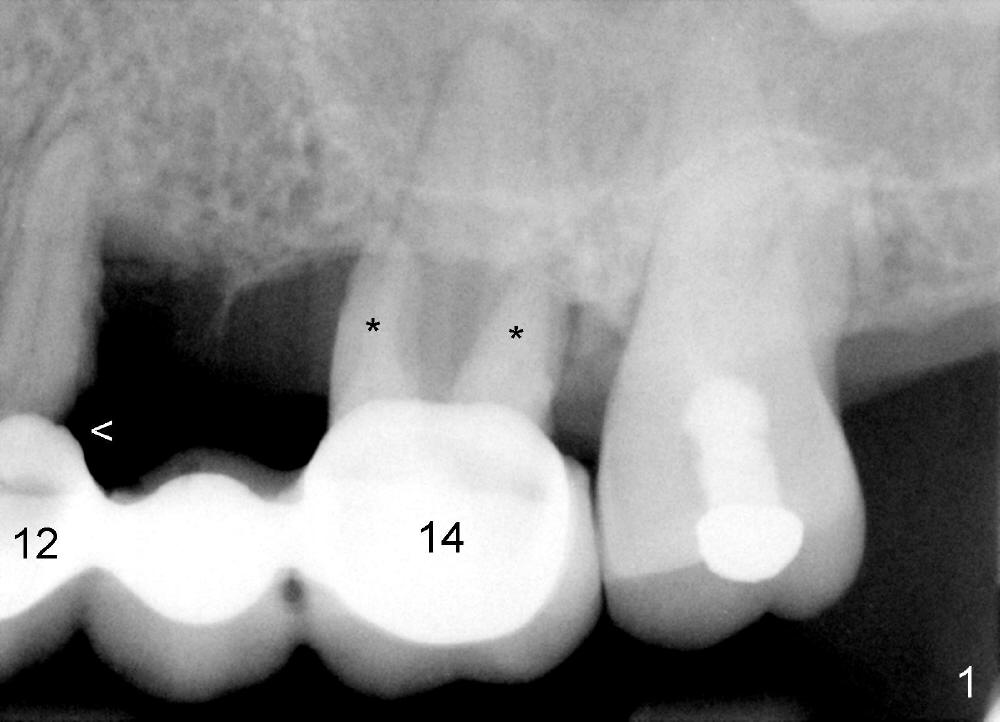
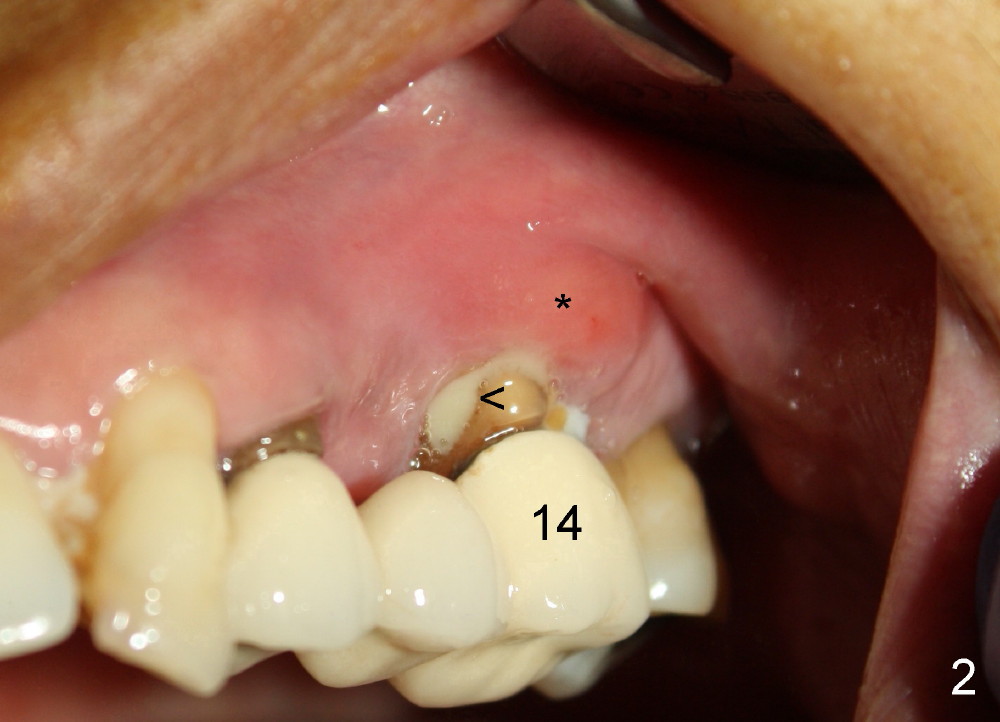
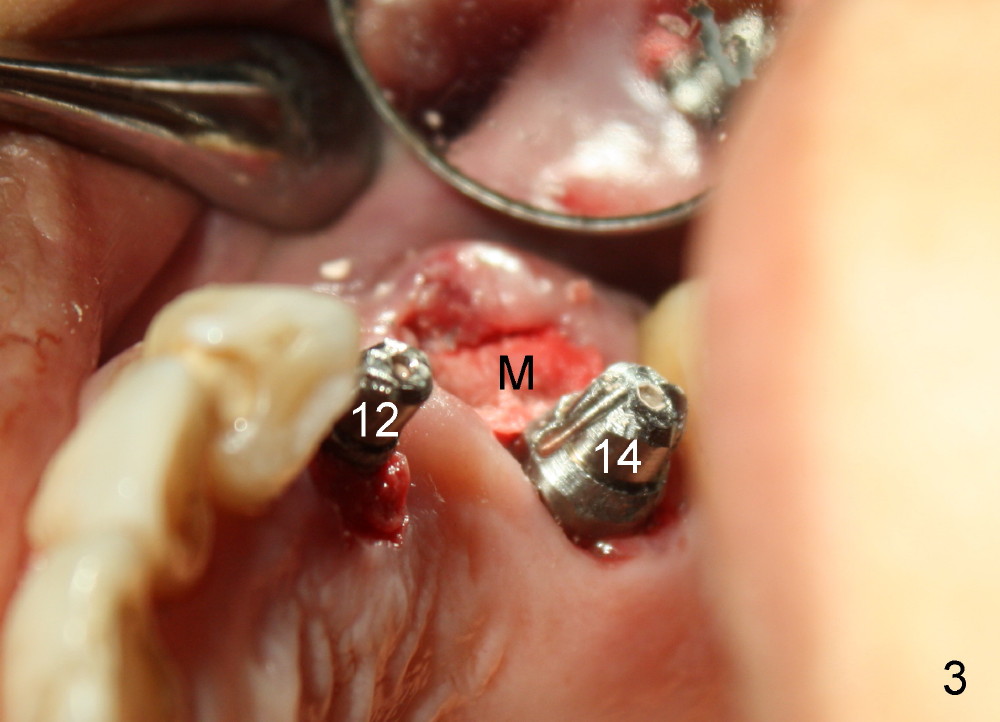
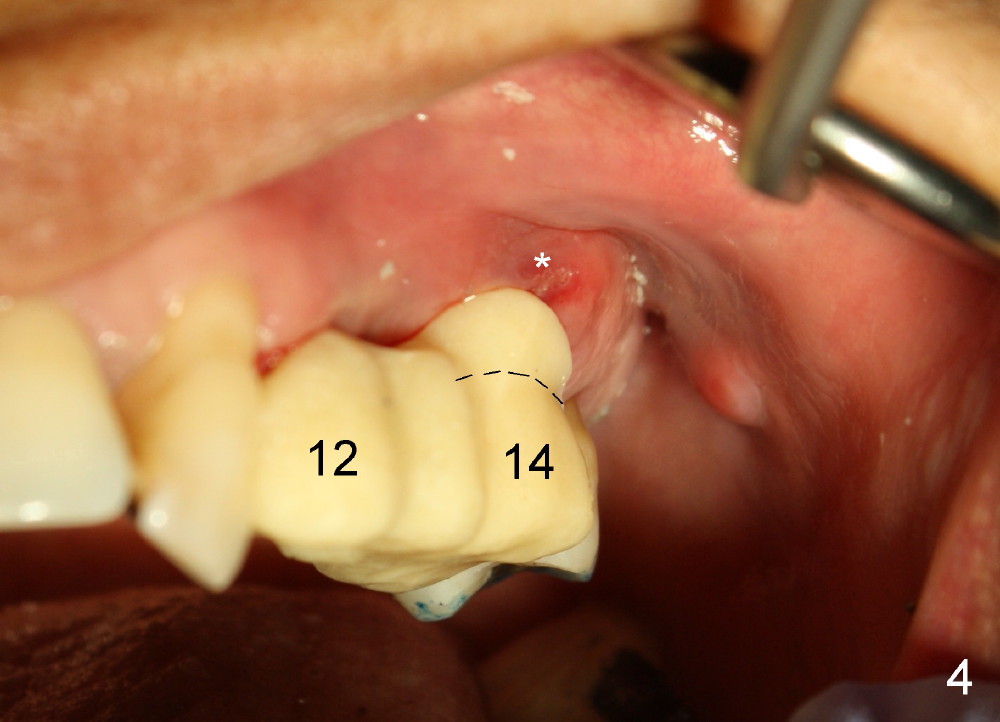
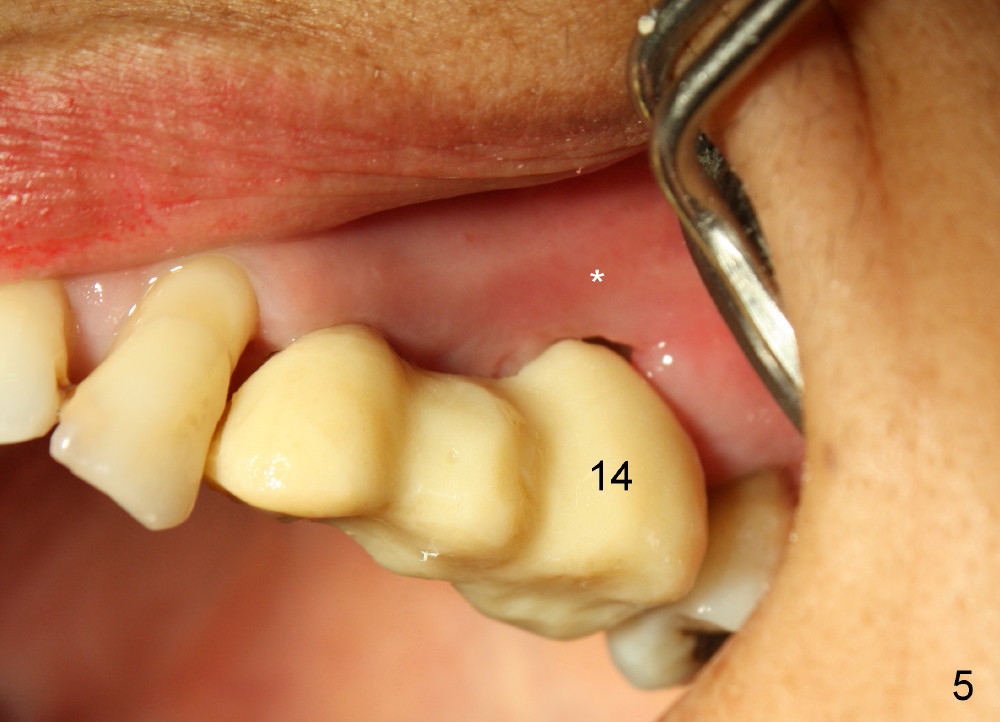
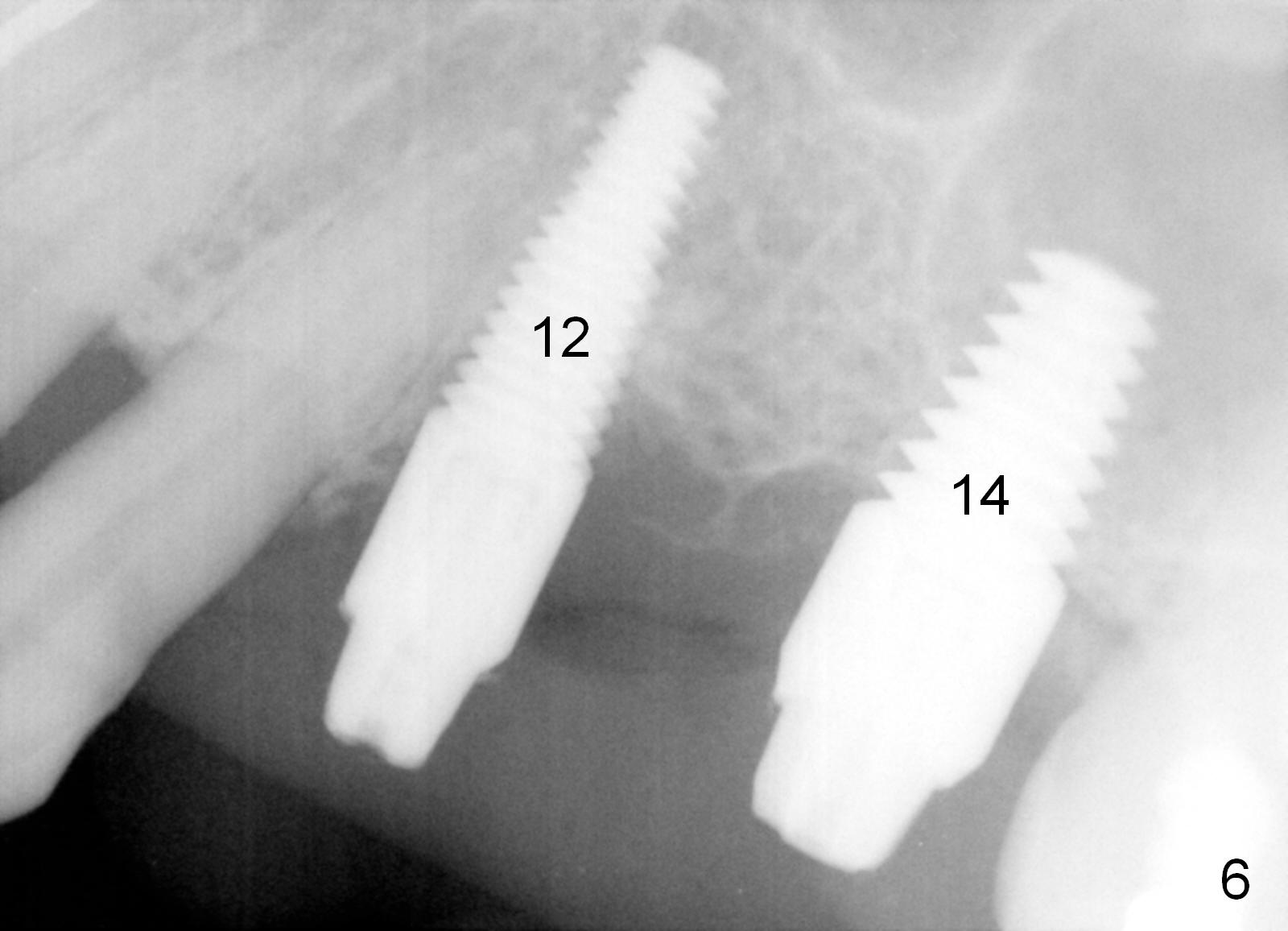
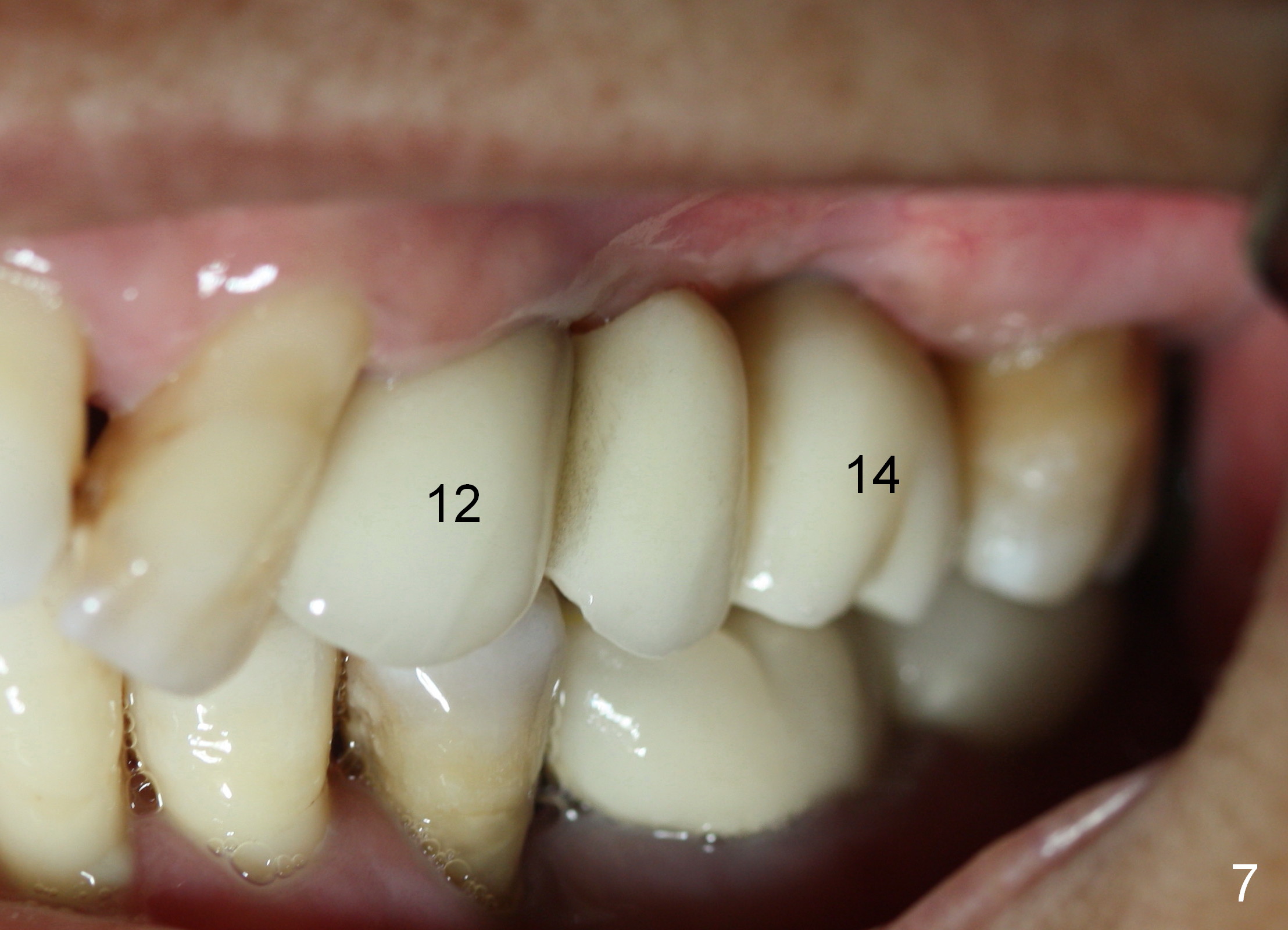
 |
 |
 |
 |
 |
 |
 |
Immediate Bridge
Ms. Li has a bad bridge on the top (Fig.1,2). It is supported by two natural teeth (#12 and 14), which have severe problems. There is a big cavity under the bridge (Fig.1 <), associated with the tooth #12. There is almost no bone support around the roots (*) of the tooth #14. Clinically, there are swelling (* in Fig.2) and pus (<)around #14. In brief, these two supporting teeth and the bridge need to be removed.
Traditionally, the infected teeth are extracted first. Let the sockets heal for 2-3 months. Then implants are placed (another surgery). Let them heal for another 3-4 months. For totally 5-7 months the patient wears a removable denture, which is inconvenient.
Ms. Li has s busy schedule and has to meet a lot of customers every day. We plan to make a temporary bridge right away for her. After tooth removal and socket cleaning, two implants are placed (Fig.3, #12,14). There is a large gap on the cheek side of #14, which is filled with bone power and resorbable membrane (M). The immediate bridge (Fig.4) not only restores appearance, but also cover the wounds. The patient is doing very well after surgery. Nine days later, the infection is gone (Fig.5 *, as compared to Fig.4 *). The immediate bridge is trimmed to fit the healing and shrinking sockets (compare Fig.4 (dashed line) and 5).
X-ray in Fig.6 is taken 5 months after implant placement. There is no abnormality. A permanent bridge is made. The latter has been in function for 5 months (Fig.7).
Return to Implant
Xin Wei, DDS, PhD, MS 1st edition 08/20/2014, last revision 07/26/2015